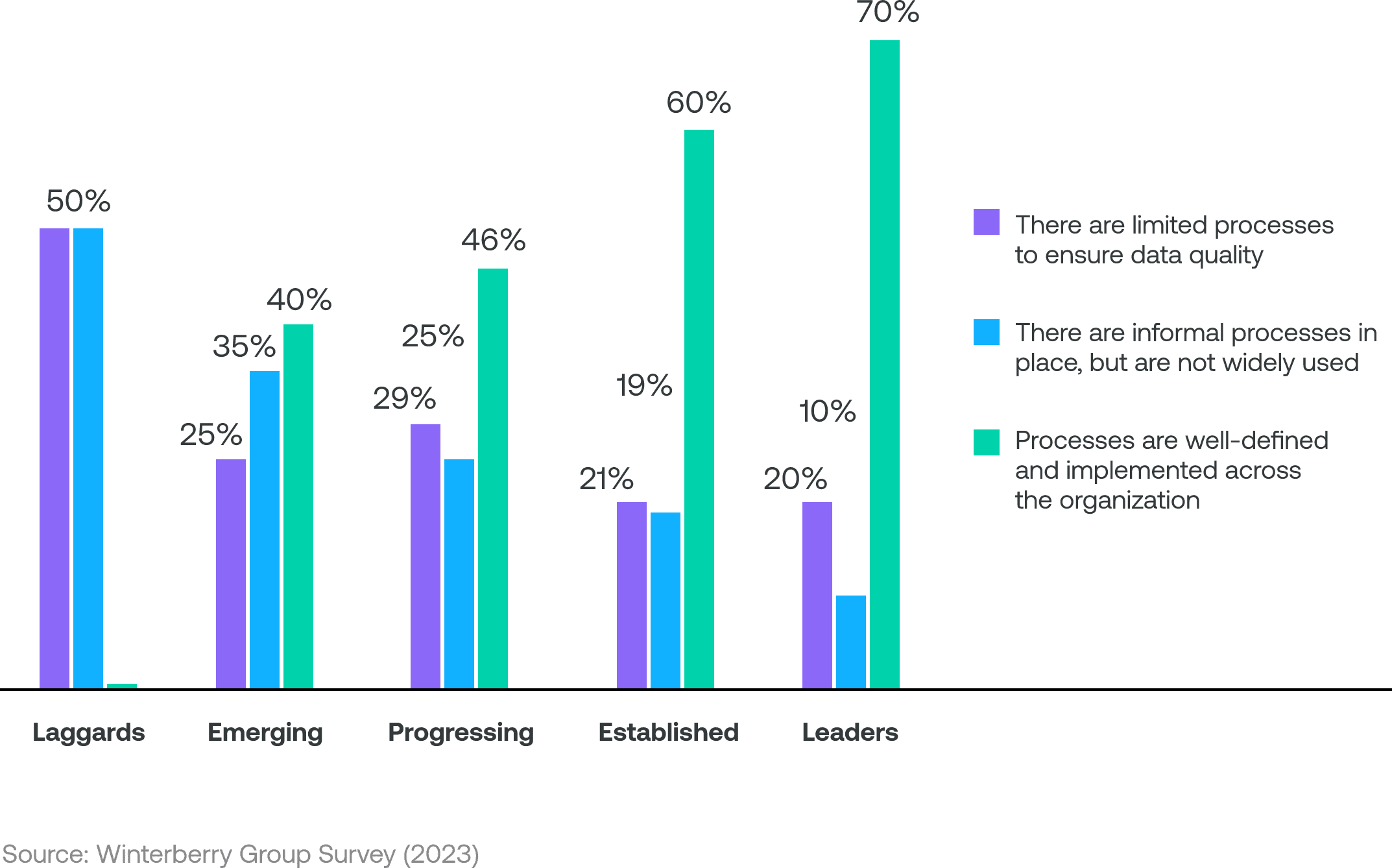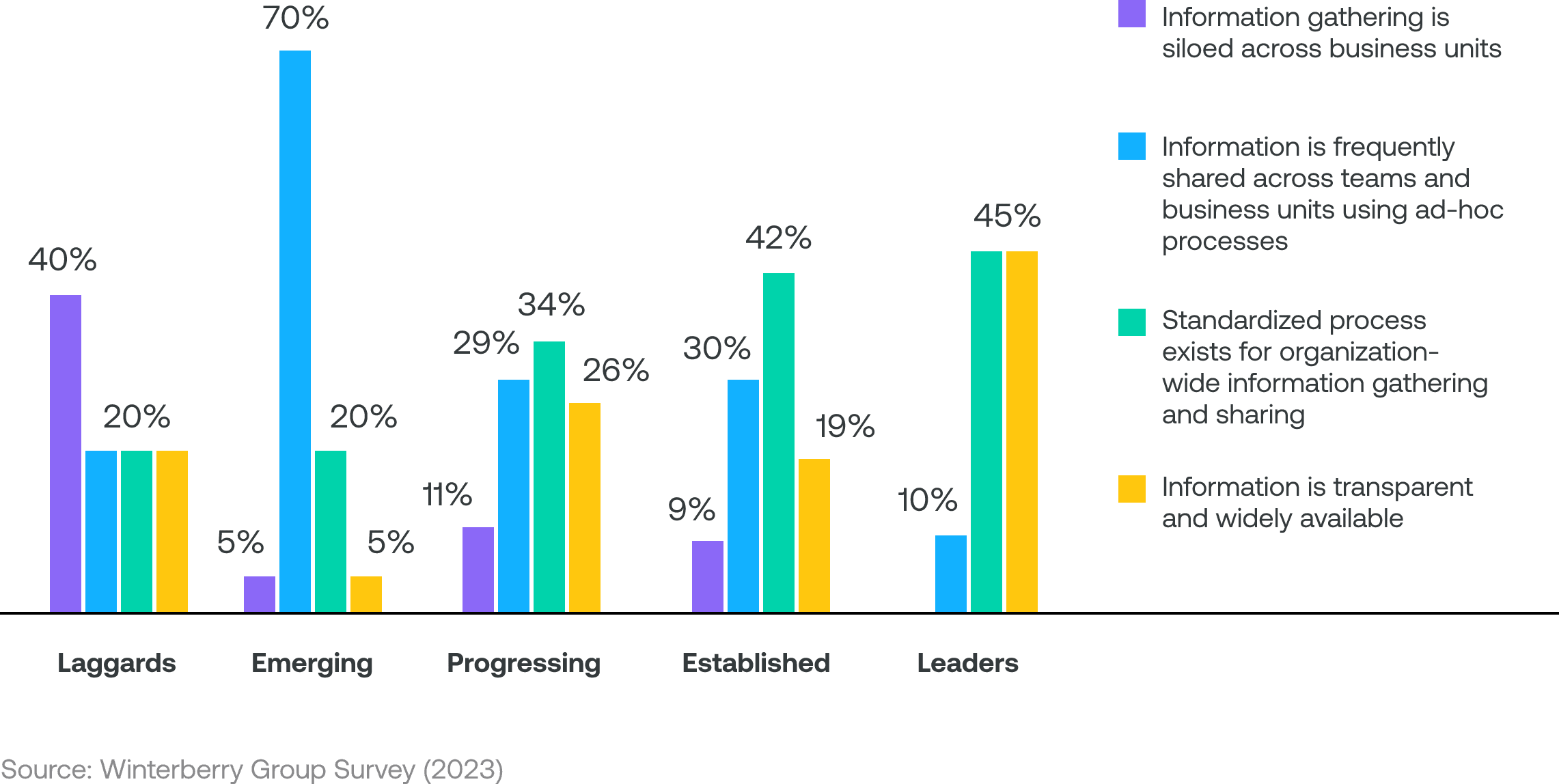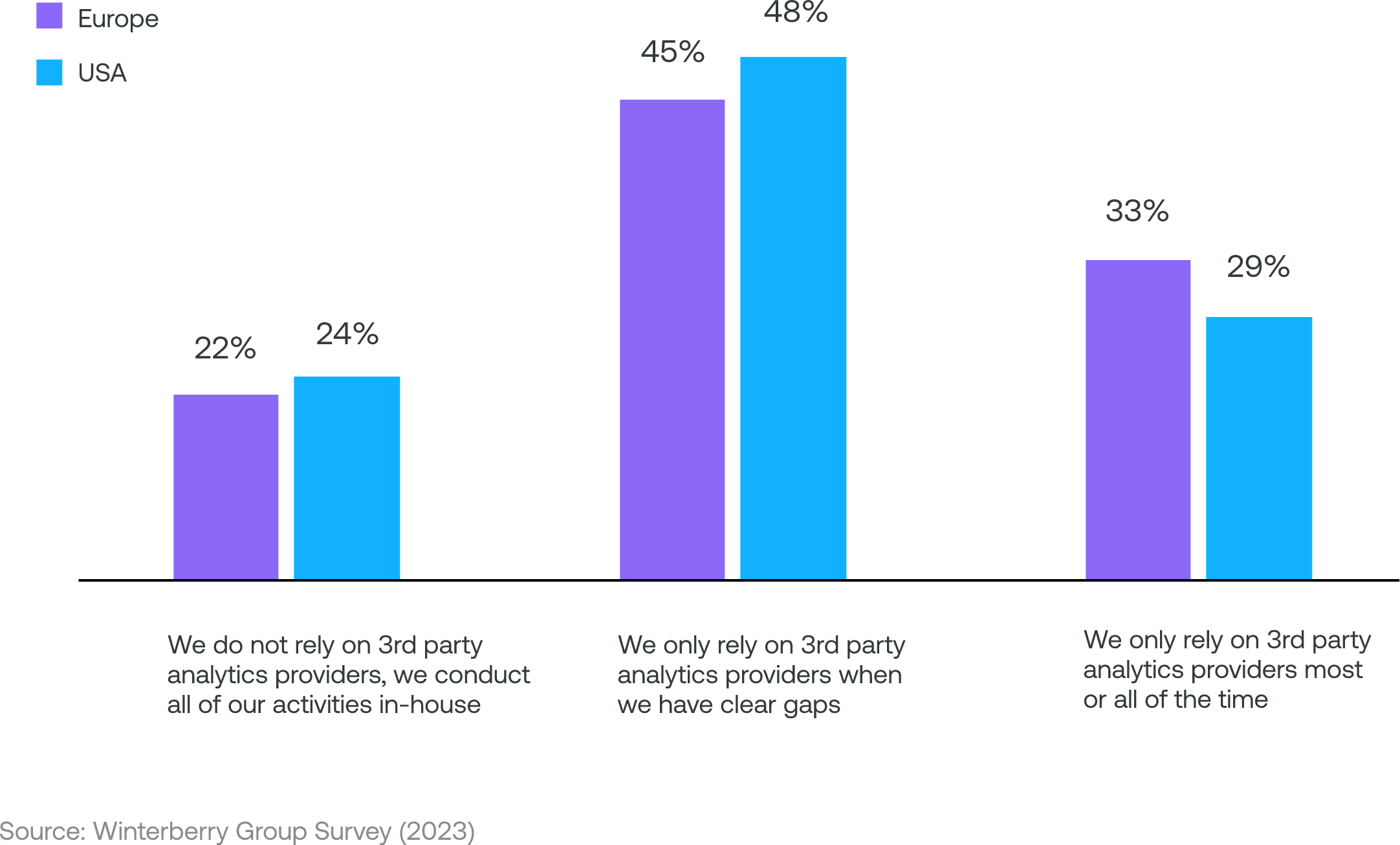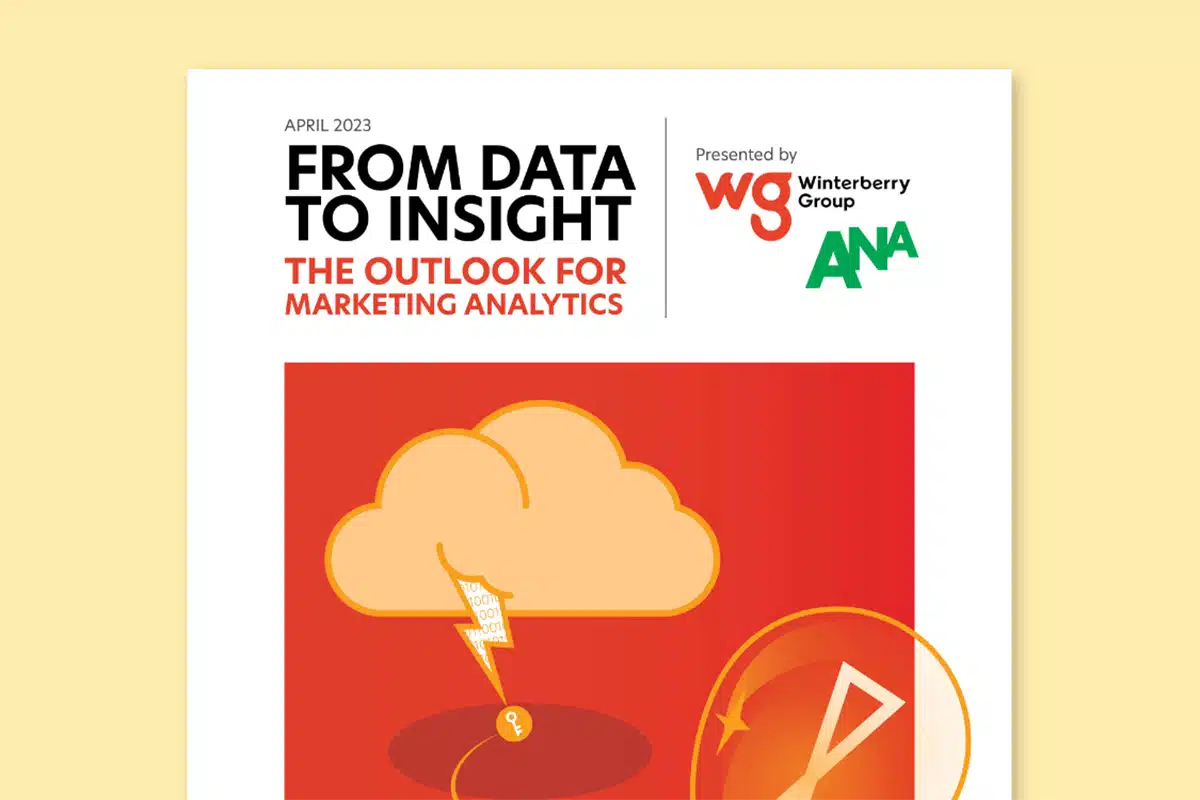The rising interest in Marketing Analytics continues. Conducting a simple Google Trends search on the term shows the gradual increase ever since they started tracking search terms in 2004 – with a little dip around the time that COVID had put the world in a tight grip.

More profound research is showing similar, unbroken trends. The Winterberry Group forecasts that marketing analytics and data infrastructure spend is expected to grow from $22 billion in 2022 to $32 billion in 2026 in the US, UK, and EU.
They attribute the growth to technological advancement, such as the rapid evolution of Artificial Intelligence, and process improvements that are enabling businesses to easily add data-driven insights into their internal decision-making. Among our own customer base, we are seeing vast improvements when setting up sophisticated commercial analytics programs, making use of faster, more granular data and analytics solutions to drive growth for their organizations.
What’s holding brands back?
According to Winterberry, “only ten percent of companies are truly leveraging marketing analytics to derive insight and automating the optimization of business decisions”. Fifteen percent of the companies who contributed to the research report have stated that they are early in their analytics transformation. Other research papers, such as Gartner Market Guide or MarTech Monitor, have uncovered similar adoption rates among their audiences.
A key challenge and area of future investment identified among marketers is the data itself. From aggregation to quality and security, many brands are still struggling with finding their way through the multiple available sources. Without a strong data strategy and the right analytic tools to compile the data, they are still missing a clear, holistic view of their business.
The report is highlighting data quality and three other key factors hindering adoption:
- Talent Shortage: Marketers have difficulty finding and hiring the talent to drive successful analytics projects.
- Data Quality and Silos: Data quality – or the lack thereof – is a longstanding issue in the marketing realm. For many years, the problem was the lack of customer data.
- Third-Party Cookie Deprecation: A variety of privacy-first data environments have emerged, offering brands the ability to model anonymized audience segments.
- Measurement “Black Boxes”: Marketplace powerhouses such as Amazon, Meta and Google have adopted “black box” approaches to media measurement in an effort to maintain control over their user data and comply with privacy regulations.
According to the Winterberry Group, tackling these challenges to move forward in the analytics journey means investing in a comprehensive strategy including five core areas of data, technology, organizational culture, processes, and partnerships.
Think outside the box
The above-mentioned pain points pose challenges all around for modern marketers. As publishers and marketplace owners adopt black box approaches to providing marketing measurement and output to buyers, analytics will play an increasingly important role to help provide clarity.
Marketers must be flexible and capable enough to link together the disparate metrics and reports offered by publishers and marketplace owners into effective business outcomes. Leaders of the Winterberry Group report are reporting on well-defined processes and implementation of data quality practices within their organizations. Integration of the martech stack with the necessary data platforms and applications is also key.

Greater scrutiny of marketing and advertising budgets combined with explosive growth in paid digital media channels – think of media fragmentation and inflation – have also led to a greater reliance on performance and business metrics to measure marketing ROI. Yet our research consistently shows that only looking at short-term goals and performance metrics such as ROAS is overstating the impact of certain channels leaves value on the table.
When setting up a new or improved program, brands must therefore also aim for a broader view of all their commercial activities, that is agile and adjustable enough to meet their needs, offer them a clear view of what’s working and what isn’t, as well as giving them the chance to simulate future scenarios.
Make use of analytics use cases – and build your own
Industry trends as well as internal and external factors are amplifying the value of analytics within the marketing toolbox. The number of brands leveraging analytics is expanding dramatically, especially in media measurement and attribution, commerce, and audience and customer intelligence. To stay on top, make sure to educate yourself on how other brands are excelling at their analytics programs.
Testing what works for your brand, and building your own internal use cases, is crucial to uncover true value for your business. Another tool that is becoming increasingly important is Scenario Planning that allows brands to plan for multiple possible scenarios and navigate uncertainty.
Organizational culture and the ability to think beyond the marketing department are likely the most critical factors for analytical success as we are hearing over and over again when talking to our own customers. Marketing and Analytics teams can work on use cases, test and experiment with different solutions for ages – if the information is not gathered holistically and shared in the same way, the company will not unlock its full potential.

Pair outsourced expertise with knowledgeable in-house teams for actionable insights
The Winterberry Group report shows that most marketing analytics leaders are using a combo of in-house and outsourced capabilities for their analytics efforts. Most of the time, this combination means that an internal team is managing the program and working with an external solution provider.

Only 22-24 percent conduct all activities in-house. Bringing marketing analytics into the company has advantages such as ownership, streamlined processes and minimized overhead which are very appealing factors under budget pressure. However, many brands that have experience with in-housing are quickly facing the pitfalls of it: costs are being underestimated, teams are not built to scale, there is a biased view of the data available, and some data might even be tapped into because the program is not set up to reflect the business KPIs.
The way ahead
While the advantages of a holistic analytics program are obvious, there might be differences between how brands, teams and companies have to set them up to reach their individual KPIs. Learning from leaders in the analytics space, building a strong analytics culture with internal and external experts, and creating a holistic view are key to future success.
Additional Resources





